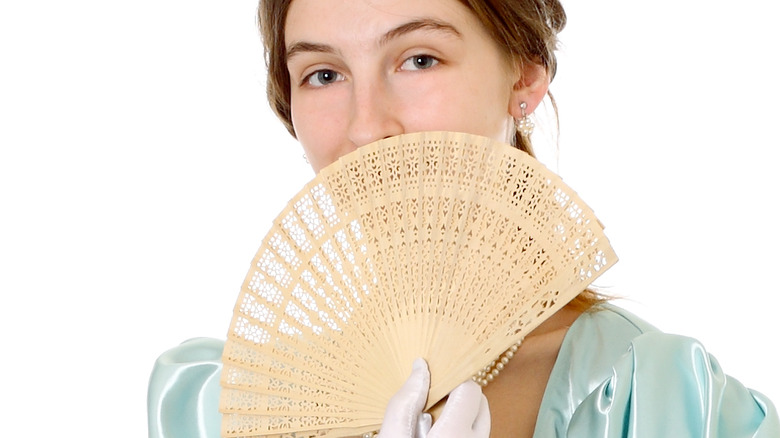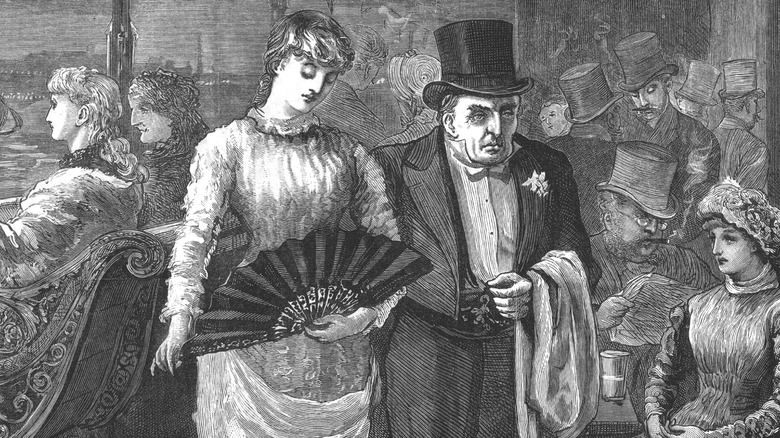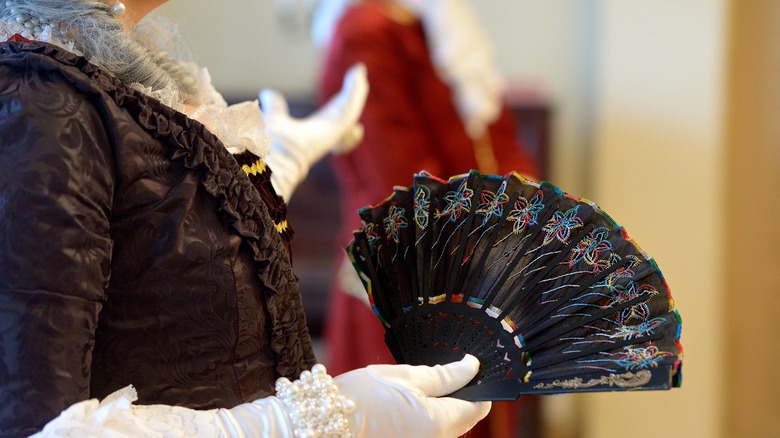Why Fan Flirting Was So Important In The Victorian Era
The sequel to the 2020 Netflix film "Enola Holmes," "Enola Holmes 2," is scheduled to release November 4 on Netflix (via IMDb). Starring Millie Bobby Brown ("Stranger Things") in the lead role, the Enola Holmes stories are based on a popular book series by Nancy Springer. They take place in late 19th-century England during the Victorian era. Though Enola is the younger sister of the much-more-famous British detective Sherlock Holmes, she has a penchant for crime solving, just like her big brother (per Nancy Springer). (The trailer is on YouTube.)
The Victorian period in which the Enola Holmes stories take place was a much more reserved time than today, especially as far gender relations and dating. One such example, as can be seen in the "Enola Holmes" films, was something called fan flirting, as Sotheby's explains. Examine the Victorian custom, and it goes to show that even when social norms are constrained, as they were for the Victorians, love somehow still manages to find a way.
Fan flirting was a little like texting
Keep in mind, in the Victorian time there were neither social media nor texting. Nor was there air conditioning, and for this reason it was common for women to carry a handheld fan to cool themselves off, as The Valentine notes. Over time, an amorous woman took to sending secret messages to a man by gesturing only with her fans, a little like sliding into someone's DMs today, per Cosmopolitan. Women's fans and the fan-flirting custom became so closely associated with the Victorian era it was referenced in Oscar Wilde's play set in the period, "Lady Windermere's Fan," as Sotheby's notes.
There's some question, though, about how organic the fan flirting trend really was, or whether it was concocted instead by fan manufacturers as a means to sell their product. The popularity of fans had declined, post-French Revolution, and one French fan maker, Duvelleroy, produced a guide to fan flirting to perhaps start a trend that would in turn make fans a must-have accessory.
There were an estimated two dozen gestures
To foster the fan-flirting (or fan etiquette) trend, in the 1820s Duvelleroy produced a printed guide, "The Language of the Fan," to help decode the gestures. As the handout explained, carrying your fan in your right hand meant "follow me," drawing your fan across your cheek meant "I love you," and placing the handle on your lips meant "kiss me." Twirling the fan in the right hand meant "I love another" — sort of the equivalent of being "friend-zoned" today.
How much men actually understood fan flirting is unclear, but perhaps they, too, turned to Duvelleroy for guidance. Though there are some myths surrounding fan flirting, according to Sotheby's, fans were certainly a status symbol in the Victorian era, and a woman of high society was expected to know how to handle one, as the accessory played an important part in a number of other social customs of the time. Yes, to keep cool, but also, in another sense, perhaps to warm things up.


